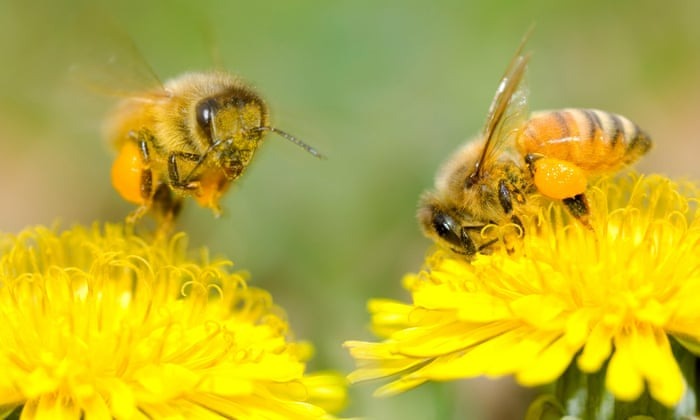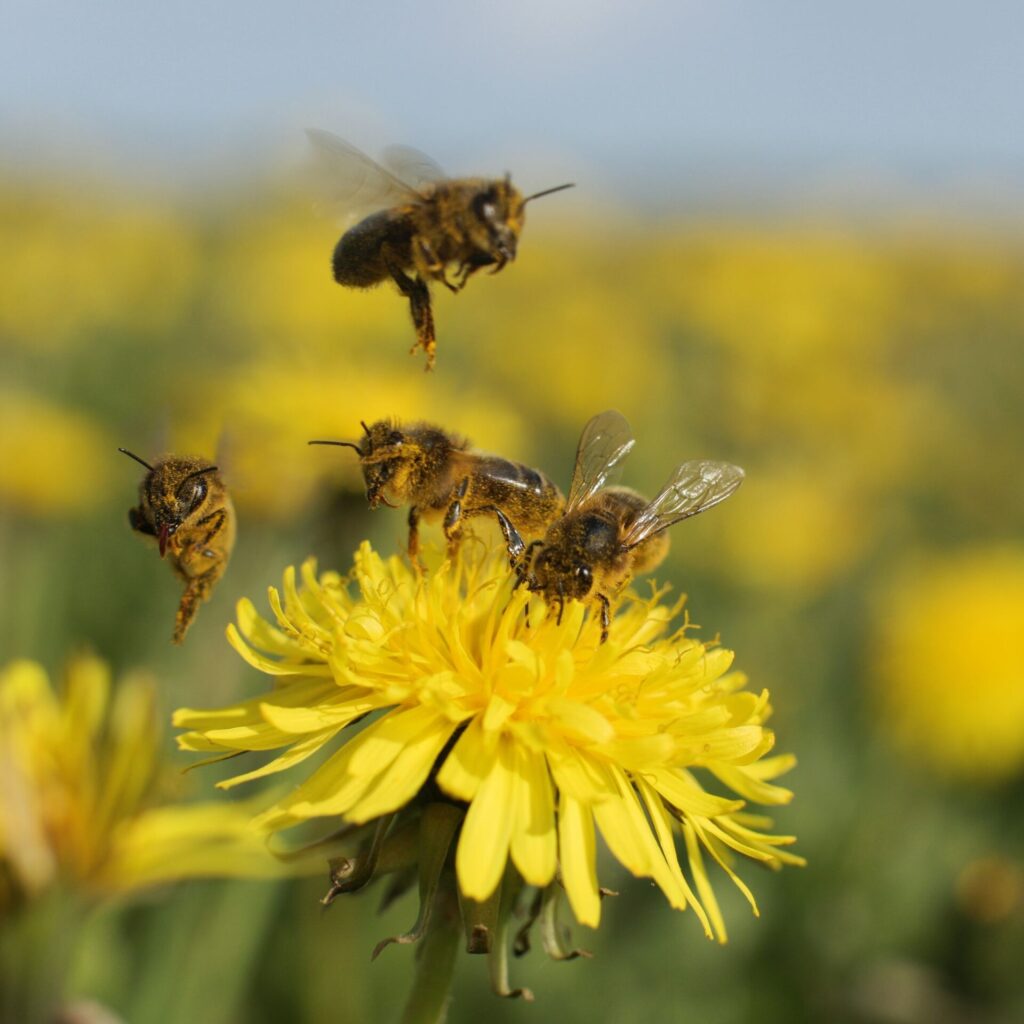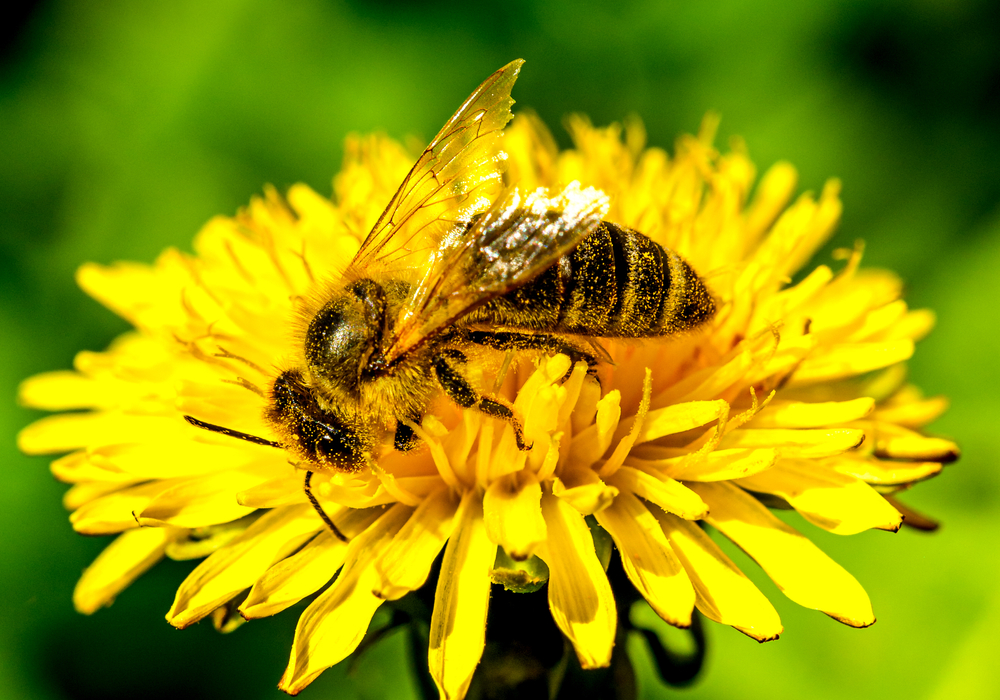
This isn’t just a picture of a dead bee. It’s a stark reminder of the delicate balance between nature’s bounty and our attempts to control it.
The pollen clinging to her legs – a vibrant yellow dust from dandelions, the first feast of spring for these vital pollinators. But beneath the golden bounty lies a silent killer – the very substance that took her life.
Her tongue protrudes, a tragic signature of the weed killer clinging to the dandelions. This seemingly harmless “weed” is, in nature’s grand design, a crucial food source for bees emerging from winter’s slumber.

It’s spring, a time of awakening for both bees and the vibrant tapestry of wildflowers. Dandelions, often seen as unwanted weeds, are the first readily available food for these essential pollinators. In the early weeks, before the luscious blooms of summer arrive, these “weeds” are a lifeline.
But a quick fix with weed killer on our lawns can have devastating consequences. This single bee, a casualty of our attempt at a perfect green landscape, represents a larger tragedy.
Imagine a world without bees. Our grocery stores devoid of fresh fruits and vegetables, a silent echo of what once thrived. The truth is, bees rely on these “weeds” for sustenance until mid-June when other flowers and fruit trees come into bloom.

There are far more “weeds” than cultivated flowers in the early spring – a natural buffet for bees struggling after a long winter. By eliminating these “weeds,” we essentially cut off their only food source.
This bee’s death is a call to action. Before reaching for the weed killer, consider the silent dance of life happening right outside your door. Let the dandelions bloom, let the “weeds” flourish for a few weeks.
There are alternative solutions for a healthy lawn that don’t come at the cost of bee life. A little patience and understanding can go a long way in ensuring a thriving ecosystem for everyone.

Remember, a healthy bee population means a bountiful harvest for us. Let’s choose co-existence and celebrate the vibrant tapestry of nature, dandelions and all.

Leave a Reply